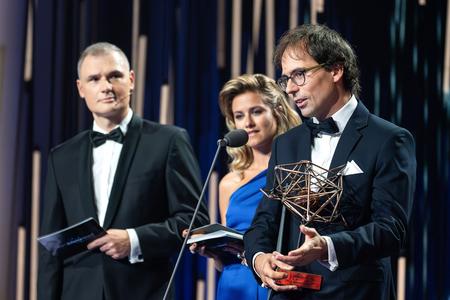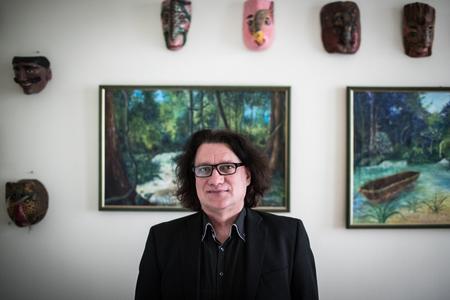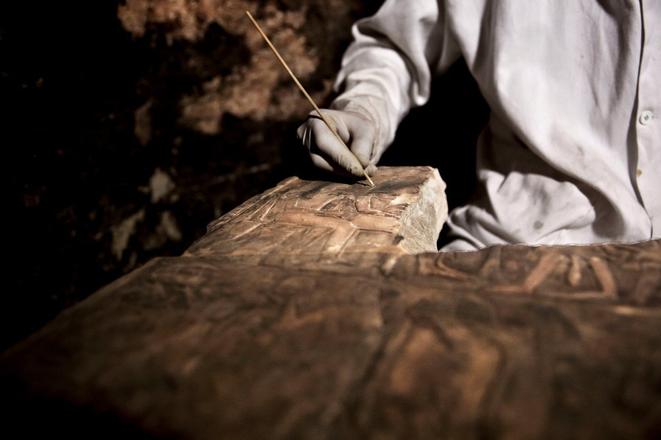Milan Kováč, a Slovak expert on the Maya civilisation, has been going on expeditions to the Guatemala jungle for 16 years, during which he and his team have made many important finds, including those of Mayan cities. Now, in cooperation with Czech experts, they have have uncovered another ancient urban centre.
This article is supported by the ESET Foundation, whose annual ESET Science Award recognises exceptional scientists.
Meanwhile, in Egypt, Slovak archaeologists have unearthed a unique moat which probably ran around the fortress of Pharaoh Ramesses III, whose reign was marked by constant war.
In this overview, you will find interviews with last year’s ESET Science Award winners, a selection of research conducted at universities and other institutions, as well as science stories that appeared on the Slovak Spectator website.
This overview of successes in Slovak science will be compiled regularly. To stay up to date with what scientists in Slovakia and Slovak scientists around the world are doing, subscribe to the Slovak Science newsletter, sent to readers free of charge four times a year.
Grinding materials to make them useful
You could be forgiven for not having come across the scientific field that Matej Baláž works in. Only a relatively small number of people anywhere in the world specialise in mechanochemistry.
Nevertheless, it can be used for some very interesting and useful things, such as repurposing eggshells for use in waste-water treatment.
Baláž works at the Institute of Geotechnics of the Slovak Academy of Sciences in Košice, and his work in mechanochemistry won him last year’s ESET Science Award in the category of 'Outstanding Scientist in Slovakia Under 35 Years of Age'.
At the heart of Baláž’s work is grinding: for example, ground eggshells can capture ions of heavy metals such as silver and cadmium. Find out how following the link below.

People with autism are unique, can contribute a lot
Although films and TV shows are often credited with raising awareness of certain medical conditions, at the same time they may lead some viewers to believe those conditions, to give one well-known example autism in the film ‘Rain Man’, are associated with superhuman intelligence.
"Autistic individuals are not all the same at all," says Daniela Ostatníková, the winner of last year's ESET Science Award in the Outstanding Academic in Slovakia category.
Talking to the Slovak Spectator, she explained there are some people with autism who talk a lot and some who do not speak at all. Some have intellectual disabilities while others do not. She goes into detail about the characteristics of autism, what happens in the brains of people with the condition, its causes, and in what ways people with autism are, in her opinion, unique.

One of the oldest Maya cities discovered
A Czech-Slovak archaeological team has discovered a new ancient Mayan urban centre. Located in northern Guatemala, the almost 3,000-year-old site was named Yax Balam, meaning the First Jaguar.
The centre, nestled within dense jungle, was previously unknown and is believed to be one of the oldest and largest centres to have been discovered in the region. The site is home to a treasure trove of artefacts, along with palaces, and observatories, and experts say it will allow them to explore different phases of the civilisation's history.
Comenius Univesity professor Milan Kováč was part of the expedition. You can learn more about the Slovak Maya expert in this story.

Overview of other research and development activities in universities:
New geographical and botanical resources for medical honey identified; Institute of Molecular Biology of the Slovak Academy of Sciences (SAS). Research focuses on natural antibacterial products such as honey, especially coming from locations with high botanical species diversity and high endemicity.Read more here and here.
Slovak team discovered the moat of Rameses III’s fortress in Egypt; Institute of Oriental Studies SAS. During November, a Slovak research team carried out a 13th season of field research at the Tell-el-Retábí site in Egypt, finding a unique moat, believed to have provided protection for the fortress of Pharaoh Ramesses III. Read more here.
SAS scientists developed new protection for implantable materials; Polymer Institute SAS. After implantation, possible undesirable interactions between medical materials and the human body can lead to inflammation and other problems. In a joint venture, Slovak and Czech scientists have developed new materials to help mitigate such interactions. Read more here.
Superconducting cable for direct current; Institute of Electrical Engineering SAS. As part of the SCARLET international project, Slovak scientists have been trying to develop a way to limit as much as possible the heating of conductors for use in a wind turbine farm. A modelling program that predicts such heating has been created. Read more here.
Analysis of Pan-Slavism in Contemporary Central and Eastern Europe; Institute of Political Science SAS; Juraj Marušiak. Its chapter dedicated to Slovakia deals with two waves of Slavophilic sentiment. Read more here and here.
The Activity of Solar System Bodies: A Case Study of an Asteroid; Astronomical Institute SAS; Olekandra Ivanova. The institute’s astronomers studied an active asteroid (they have a comet-like appearance such as a tail for a limited amount of time), obtained direct images. Read more here and here.
An innovative method of binding ceramic materials; Institute of Inorganic Chemistry SAS. Silicon carbide-based advanced materials are among the most important ceramics used in the nuclear and space industries, but production of large-size, complex shaped structures from these materials is difficult. Together with their Chinese colleagues, Slovak scientists have designed a new way of binding of these ceramics together. Read more here.
Fostering opportunities towards Slovak excellence in advanced control for smart industries; Slovak University of Technology; Miroslav Fikar. The project aims to transform the university into an excellent institution performing high-quality research in advanced automatic control. These goals are being achieved in collaboration with two renowned research groups from western Europe. Read more here.
Monitoring and tracing the movement and contact of persons in medical facilities; University of Žilina; Tomáš Loveček. A system for an internal localisation was installed in a hospital, testing its function. The goal is to create a system that would be able to trace both people and items, resulting in a more effective use of wheelchairs, elevators etc.
Research on measures implemented by security managers in connection with the spread of Covid-19; University of Žilina; Andrej Veľas. Universal, simple yet comprehensible guidelines based on the experiences of security managers were created focused on effective measures in the event of situations such as the Covid-19 pandemic.
The influence of education on the issue of hybrid threats; University of Prešov; Peter Gallo. The paper demonstrates that people with higher education believe an effective educational process is capable of protecting against misinformation, while people with secondary education favour repressive measures and various forms of control by the government. Read more here.
Generational and period impulses in ideological kinetics of 20th century Slovak philosophy; University of Prešov; Ondrej Marchevský. Important Figures of Slovak Philosophy of the 20th century was published.
Other Slovak science stories on Spectator.sk:
ASTRONOMY: In an interview, Nobel Prize winner Michel Mayor talks about the discovery of the first planet outside the Solar System, about the growing interest in hunting for distant planets, as well as the possibility of extra-terrestrial life.
FESTIVAL: Astrophysicist Garik Israelian talks to the Slovak Spectator about what made him choose a career in science, how science and art is connected, and what the Starmus festival has in store for Slovakia.
PANDEMIC: Humanity will be ready for the next pandemic, but in the case of the Czech Republic and Slovakia, not so much, says Czech biochemist Jan Konvalinka.
ROBOTICS: Ružena Bajcsy has experienced enough hardships for several lifetimes. During World War II, the Nazis killed her parents. Then, under communism she was banned from seeing her family. However, she was one of the most important computer scientists in the world, and now her work is being rediscovered.
SPACE: While Slovakia is unlikely to be the first country to come to mind when asked about major players in space research, Slovak scientists are actually playing a key role in some cutting-edge projects in the sector. Slovak space research is growing, as evidenced by an 80 percent increase in companies in the sector.
CERAMICS: Usually when ceramics are mentioned, people think of things like pots or figurines made from clay. It has only been in the last century, due to developments in chemistry, that other kinds of ceramics have emerged, creating a relatively new area of research.
This article is supported by the ESET Foundation, whose annual ESET Science Award recognises exceptional scientists.


 Illustratory image. (source: TASR)
Illustratory image. (source: TASR)